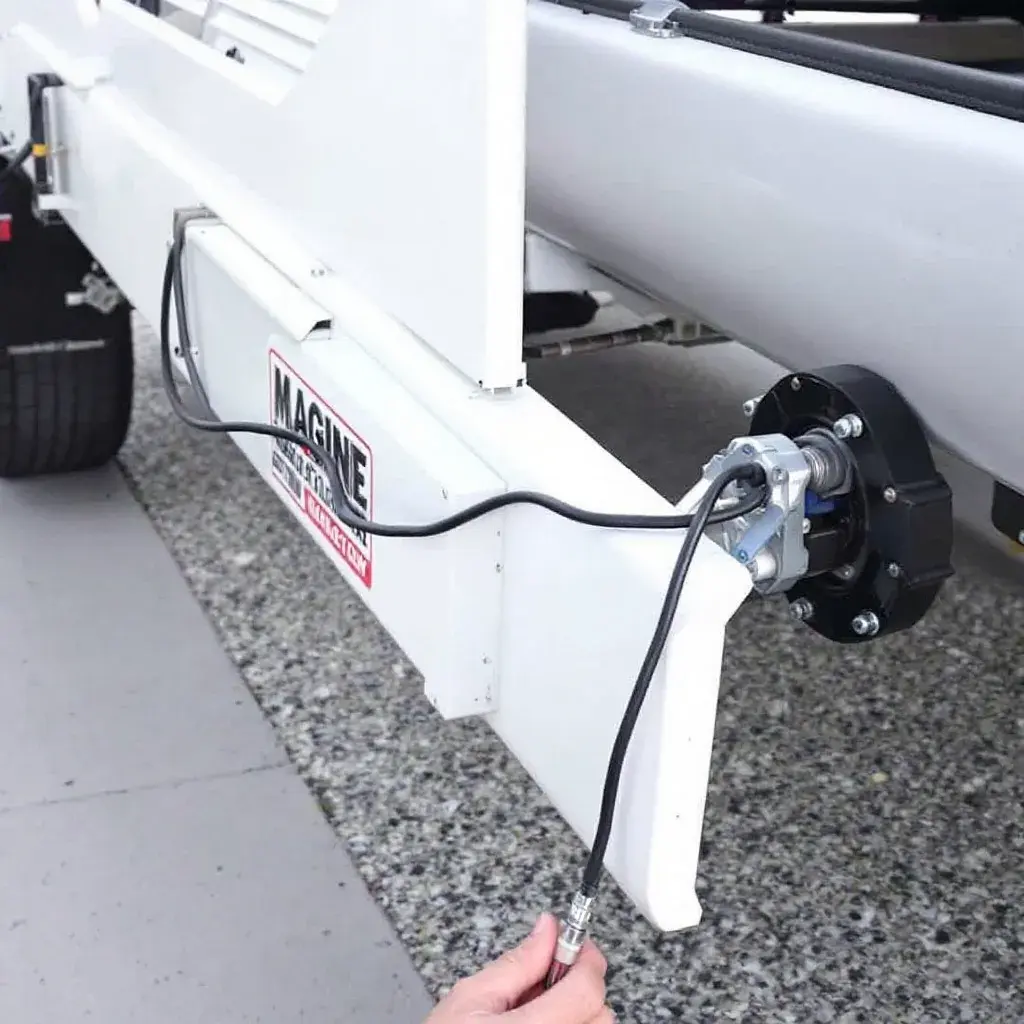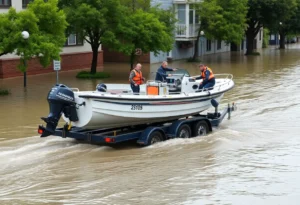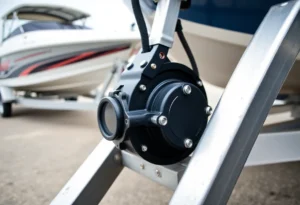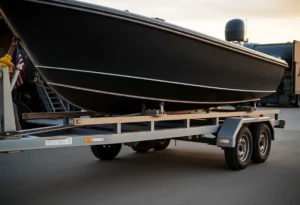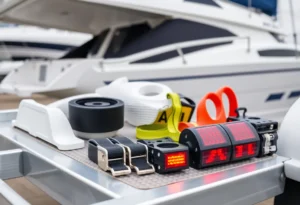Transporting a catamaran safely requires a well-designed trailer and an efficient braking system to manage the extra weight, especially during long hauls. Selecting and installing the right braking system enhances safety, control, and stability on the road.
Why a Braking System is Essential for Catamaran Trailers
Catamarans are often heavy and can exert significant force when stopping. An integrated braking system helps distribute the load, providing additional control and reducing the impact on your vehicle’s brakes. California regulations often require brakes on trailers above certain weights, making this a practical and often necessary upgrade.
Types of Braking Systems for Trailers
- Surge Brakes: Surge brakes are hydraulic and engage automatically when the trailer pushes against the vehicle during deceleration. They are a popular choice due to their simplicity and reliability and work well for trailers that do not require electronic connections.
- Electric Over Hydraulic (EOH) Brakes: EOH brakes provide excellent stopping power, especially for heavier loads. They combine hydraulic braking power with electronic controls, offering real-time adjustments from your vehicle’s braking system for optimal performance. An EOH system is ideal if your towing vehicle supports brake controllers.
Step-by-Step Guide to Installing a Braking System
- Choose the Brake Type: Decide whether you need a surge or EOH system based on your towing vehicle’s compatibility and the frequency of use.
- Mount the Brake Actuator: The brake actuator, whether hydraulic or electric, is mounted at the front of the trailer. Ensure it is securely fastened and properly aligned for smooth operation.
- Install the Brake Lines: Attach durable brake lines along the length of the trailer, keeping them away from areas prone to damage. Brake lines should be fastened securely to prevent movement.
- Connect to Brake Assemblies: Attach the lines to the brake assemblies at each axle. Verify that each connection is sealed tightly to prevent any hydraulic fluid leaks.
- Testing: Once the installation is complete, test the system with gradual pressure to check for responsiveness and to identify any leaks. Proper braking should feel smooth and controlled without any delay.
Maintenance Tips
Regular maintenance keeps your trailer brakes effective. Inspect the brake lines and actuator for signs of wear, test brake response, and ensure hydraulic fluid levels are adequate. By maintaining your brakes, you help ensure that every journey is safe for both your catamaran and your vehicle.
This step-by-step guide ensures that your catamaran trailer’s braking system provides reliable and responsive stopping power for your transportation needs.

